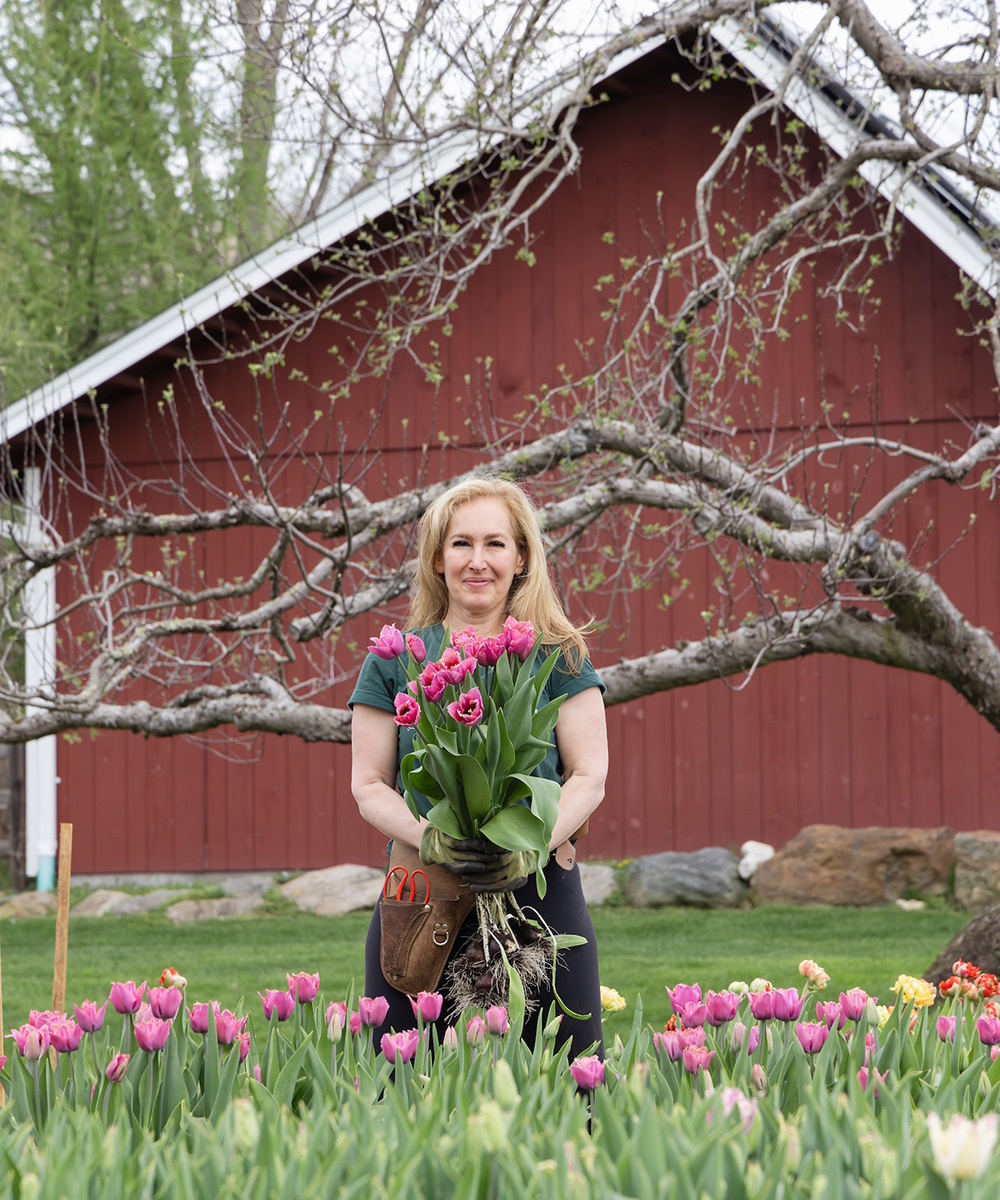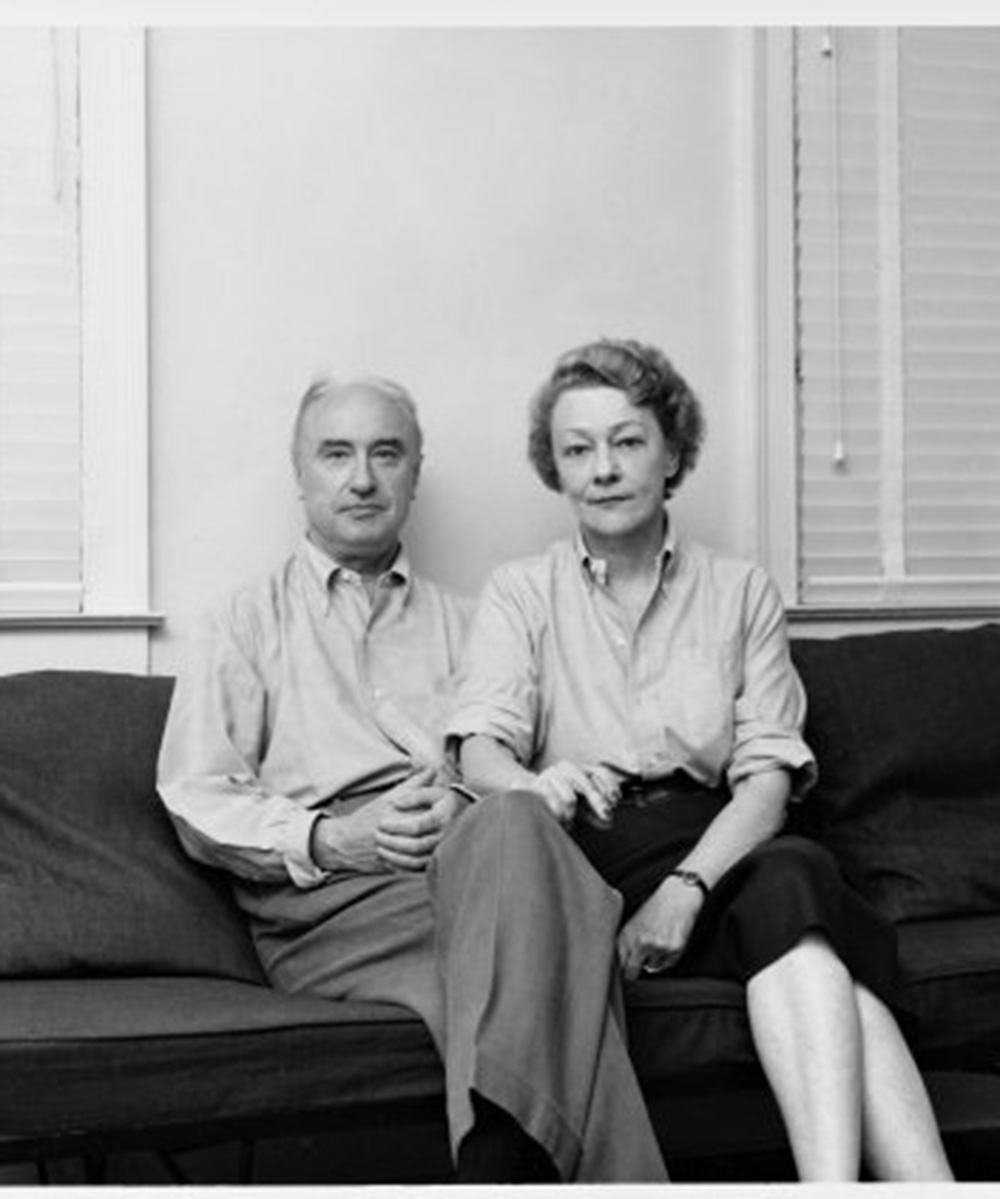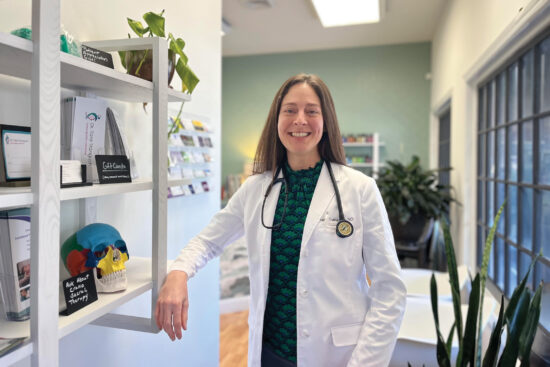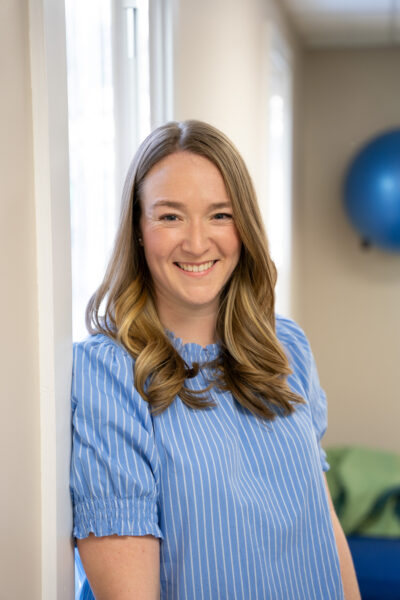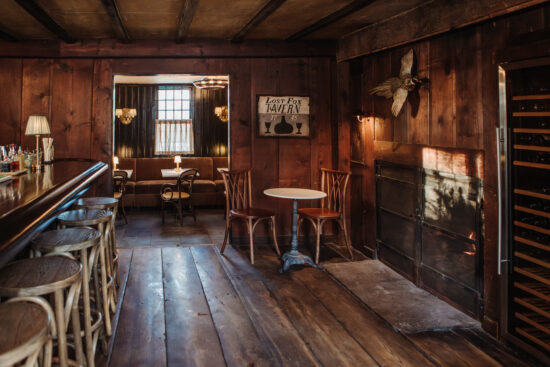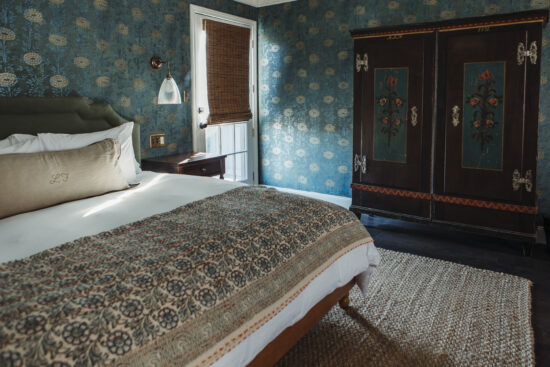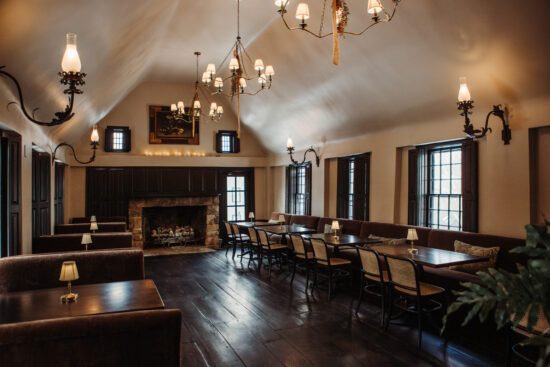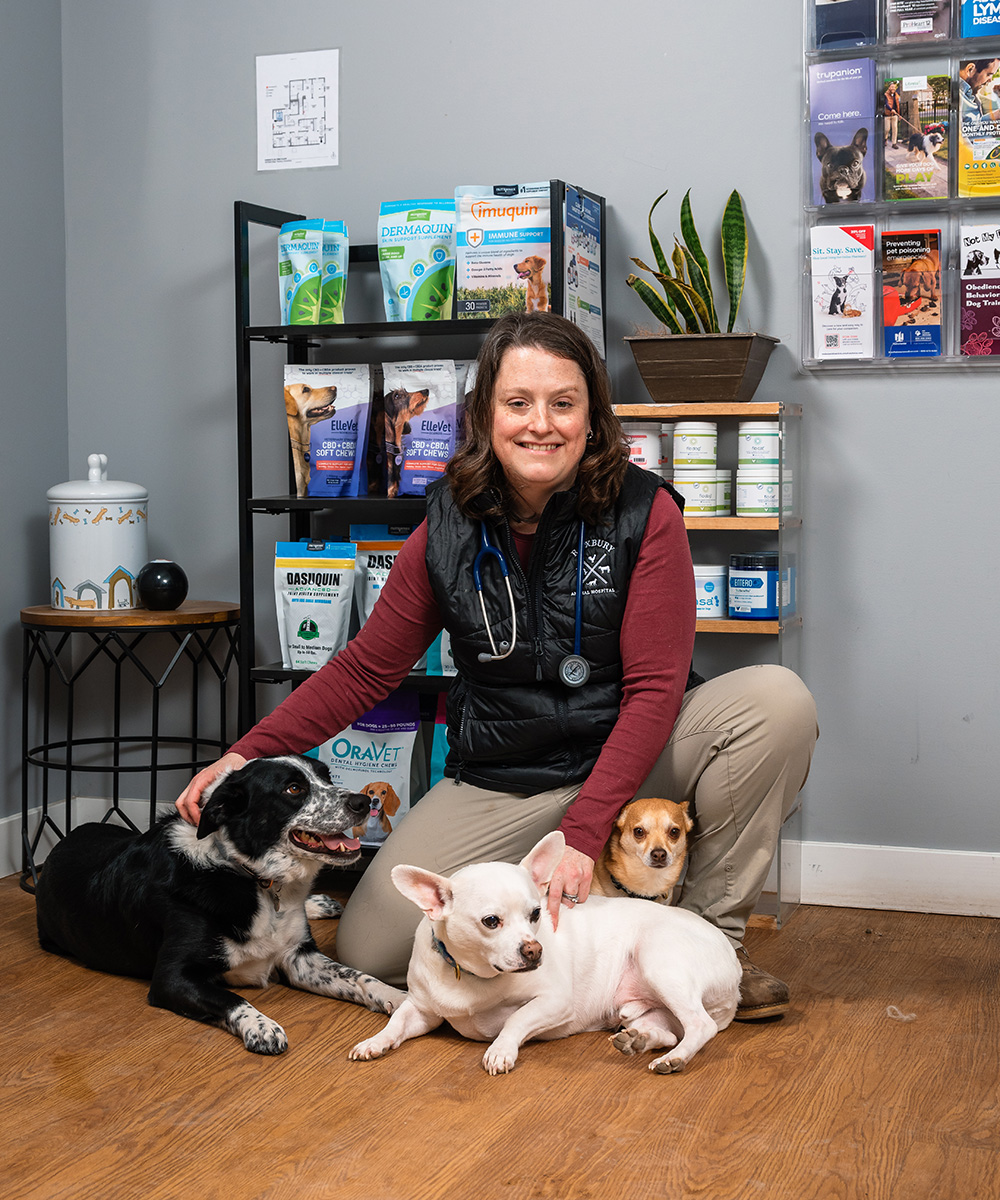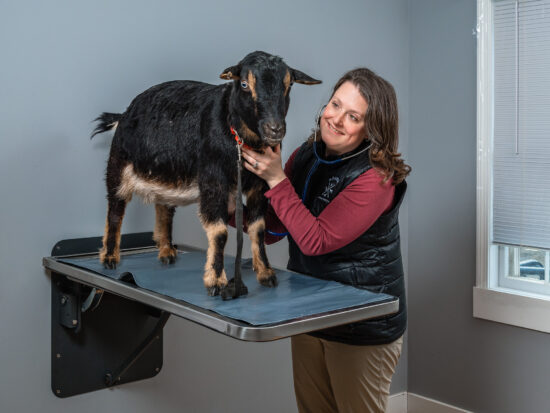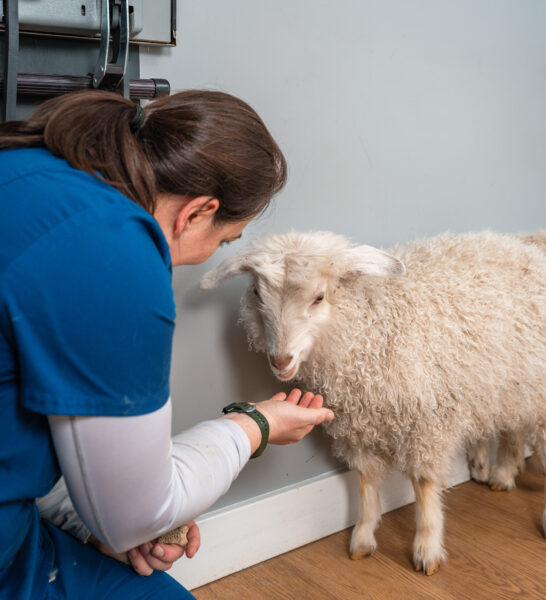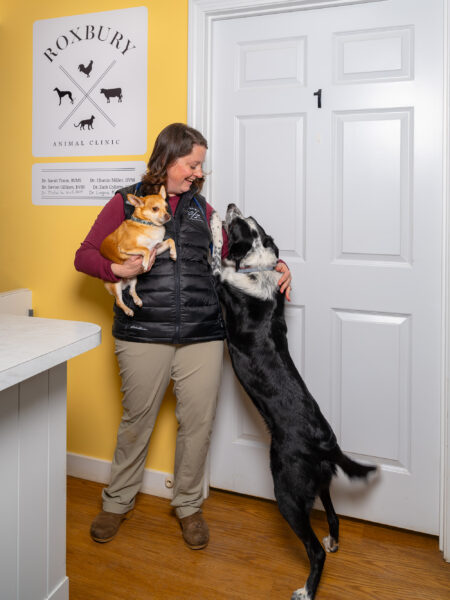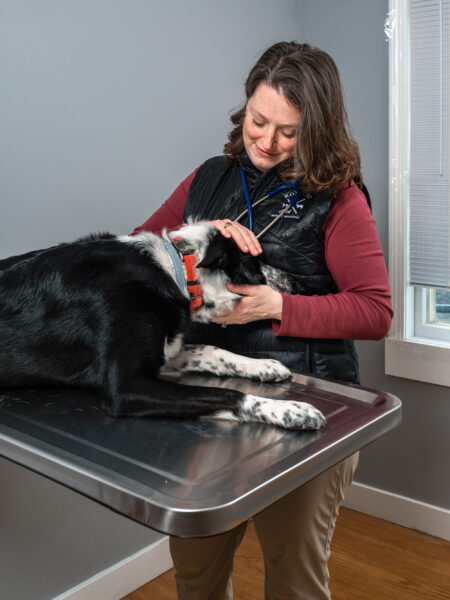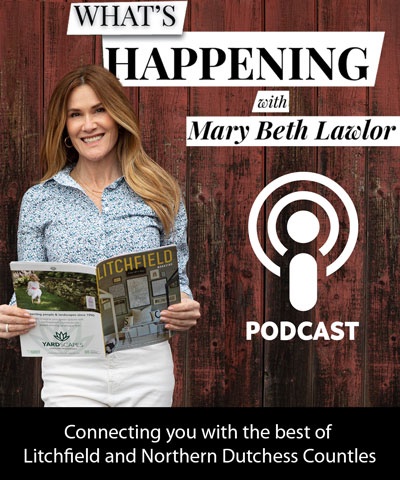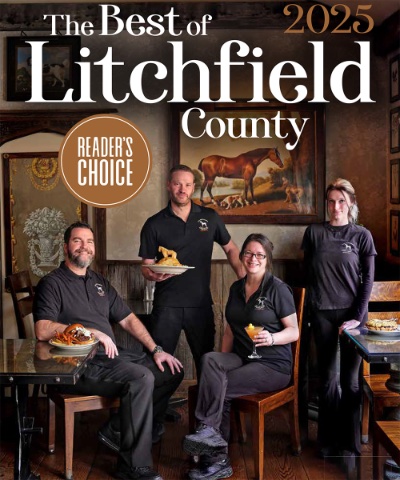Discover Anderson Acres Farm’s vibrant indoor tulips and year-round cut flowers, bringing spring early to Kent.
In February and early March, the fields are brown and veiled in icy frost when Cameron Caruso arrives for work at Anderson Acres Farm in Kent. But then she opens the door to the greenhouse, and it’s instantly spring. Not just a hint of spring, but the full-blown beyond-the-rainbow version. By the hundreds, tulips are unfolding in luscious colors that would make Rembrandt’s brushstrokes envious. There’s the earthy scent of warm soil, there’s a hint of floral perfume mixed in, and the power surge of nature’s bounty is unleashed.
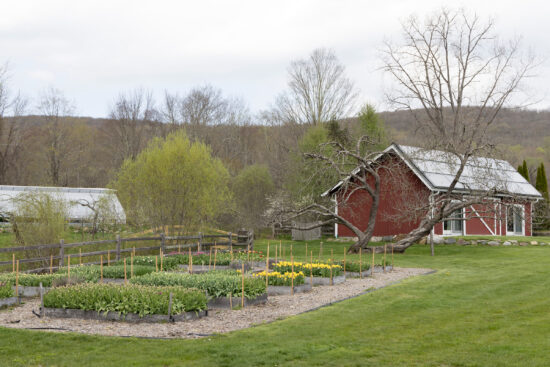
Most of us would find the disconnect between the season outside and what’s happening indoors to be disconcerting, but for the crew at Anderson Acres Farm, delivering spring to the region ahead of schedule is the mission statement.
It’s all part of Michelle Saltz’s vision. She and her husband, Ron Saltz, fell in love with Anderson Acres in 2011, purchasing the 214-acre farm from Ky Anderson, whose family bought it as a dairy farm in 1903. In the 1960s, it morphed into a horse boarding/riding stable, until Ky put it on the market when she was 86. “She came over on a tractor to meet us,” Saltz remembers of the day when she and her husband became “so overcome by the beauty of the place that we couldn’t stop thinking about it.”
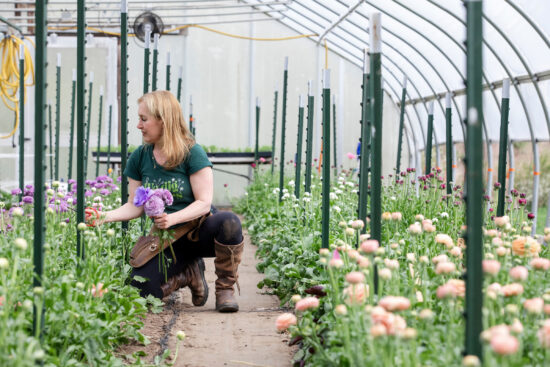
There were issues. Although the parcel totals 214 acres, the land is largely protected by a conservation easement, with only a 20-acre envelope available to be developed. Subtract wetlands, and fewer than five farmable acres remain.
Another stumbling block was lack of experience. The Saltzs came from an acre in Scarsdale, never having farmed before. And yet, they bravely dove into livestock. When the chickens (and several other false starts) didn’t work out, Anderson Acres ultimately veered into cut flowers.
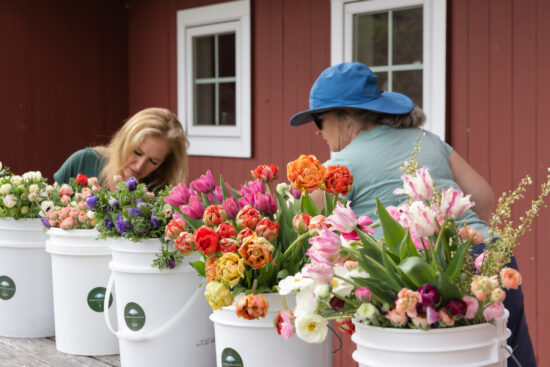
Although their inventory of cut flowers is long and inventive, tulips turned out to be their parachute. When COVID shut everything down, the greenhouse was bristling with a particularly robust crop of those promising spring flowers, all poised to perform. Anderson Acres had a surplus of the world’s happiest, most-beloved blossoms in April 2020 when the world went into lockdown.
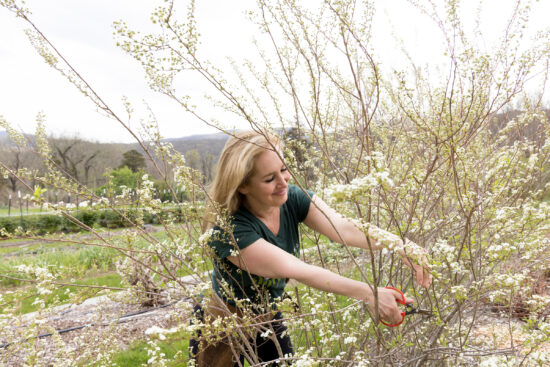
In a moment of unprecedented trauma, tulips came to the rescue. “I put the word out on Instagram, people spread the news, and we sold every flower that we could grow,” Saltz recalls. “It was a place where the community could safely come together.”

Enthusiasm for the crop never stopped. Anderson Acres still sells tulips by the thousands, now under the expert eyes of farm manager Cameron Caruso and a hardworking, creative team of very dedicated staff. In October and November, the work begins. Each crate gets 66 bulbs. They are chilled in coolers, then brought into the warmth in relays. The farm grows the gamut of types, from mainstays to rarities.
And the tulip interlude is just the beginning of a petal parade that segues into anemones and ranunculus, followed by daffodils and hyacinths, then swinging to the full pageant of field-grown flowers: annuals, perennials, shrubs, you name it. The CT Flower Collective, a co-op of floral farmers and florists, and several local outlets are the primary customers.
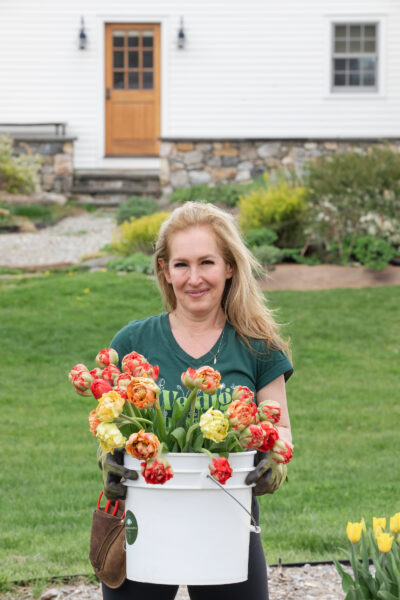
And Anderson Acres continues to serve their neighbors as well. Hand-tied bouquet subscriptions are impressively popular, starting in spring and continuing nonstop through the various crops. Not only is the year a kaleidoscope of colorful blossoms, but Michelle Saltz can now proudly add “farmer” to her resume. We all have the humble tulip to thank. —andersonacresfarm.com
By Tovah Martin
Photographs by Rana Faure






